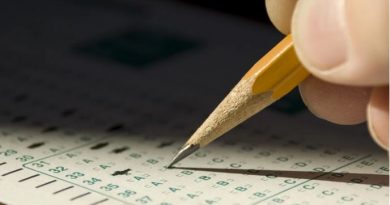A Better Breakout Room Experience for Students
Five strategies that help middle and high school students form a community of learners in the virtual classroom.
The pandemic has completely transformed the way we teach and the way students interact. At the beginning of the school year, I imagined breakout rooms being a popular feature among students during remote learning. I was disappointed when I saw students sitting in silence with their screens off, so I focused on building a community of students that would connect and learn from each other and ensure that each breakout room would be purposeful and meaningful with our limited time.
I’ve found that the success of breakout rooms hinges on a strong action plan. Here are five strategies I’ve found that improve the overall breakout room experience.
5 Tips for Better Breakout Rooms
1. Individual tasks first, then group tasks: To ensure that time is purposeful when students enter breakout rooms, assign students individual tasks before group work. This strategy helps foster meaningful discussions, and students focus on listening and speaking to each other about their tasks instead of just focusing on finishing the work. This builds a connection and encourages students to synthesize their ideas.
Another idea is to have students record their discussions, which holds them accountable for their contributions. I’ve found that using the recording for formative assessment when students create, evaluate, or explore a topic can be very useful.
2. Team-building activities: Starting class with an energizing community builder allows students to form relationships, share ideas, and practice communication skills. When I let students choose their groups and limit the number of participants in breakout rooms, students talk more and have a more intimate and relaxing experience. As students become increasingly comfortable with each other, I switch groups and keep the number of students in the breakout rooms small.
The need for social and emotional activities has become more apparent during the pandemic and remote learning. Using only SEL strategies in the breakout rooms and allowing students to work on content individually fosters a strong sense of community in the class. SEL strategies help build self-management, social awareness, and responsibility.
These skills translate into creating a dynamic classroom where students understand their purpose and importance in the classroom. When students complete the individual content work, it allows them to practice the SEL skills learned during breakout rooms. As time goes on, students are more apt to participate in activities surrounding content.
3. Student roles: To promote ownership in the breakout rooms, I assign a group leader or ask for a volunteer. The group leader will help establish the expectations and keep the group on task. If the discussion or group assignment is falling silent or off-task, the group leader can engage them back on track. Having a set role for students eliminates any silence or awkwardness.
These roles also promote a sense of ownership of the learning. I’ve considered assigning multiple roles to students in breakout rooms, such as curator, timekeeper, checker, or questioner. For example, students with the curator’s role can take notes and organize information from all the group members. Teachers can customize roles depending on the activity.
4. Virtual gallery walks: When assigning students to breakout rooms on Zoom, I select “Let Participants Choose Room.” I assign some students at the beginning to be the “movers” and other students to be “presenters,” so that each student knows their initial role. The movers change between breakout rooms, and the presenters stay in the rooms to share information. The students switch roles once all students have moved between all the virtual rooms. I use the broadcast feature and timer to ensure that students are on task and continually moving. Students record their findings on a Google Doc as they move through the activity.
Another variation of the strategy is to have students create shared meeting links, which I love because it allows students to interact with almost everyone in the class. Since the students frequently switch, discussions rarely fall silent, and students build and extend their discussions.
5: Norms and expectations: At the beginning of the school year, my students set the class norms and expectations. Allowing students to create the ground rules of how the group will function enhances the breakout room purpose. Students are aware of the group’s expectations and what they need to contribute, and they understand what’s expected of them.
As I continue to plan and try to improve my lessons and student participation, I remind myself of what students need right now, a place to connect. Teachers should be aware of the important components of successful online teaching, including clear, authentic, and meaningful activities. Consider how you can create a space for students to connect, think, grow, and collaborate.
As in-person classes eventually resume, I’ll continue to implement these strategies. Social and emotional activities will still be necessary. I’ve seen students improve their critical thinking and collaboration skills. Continually setting norms for groups, giving students assigned roles, and providing time for individual assignments first will foster highly effective student collaboration and critical thinking for a lifetime of learning.
Source: https://www.edutopia.org/article/better-breakout-room-experience-students




